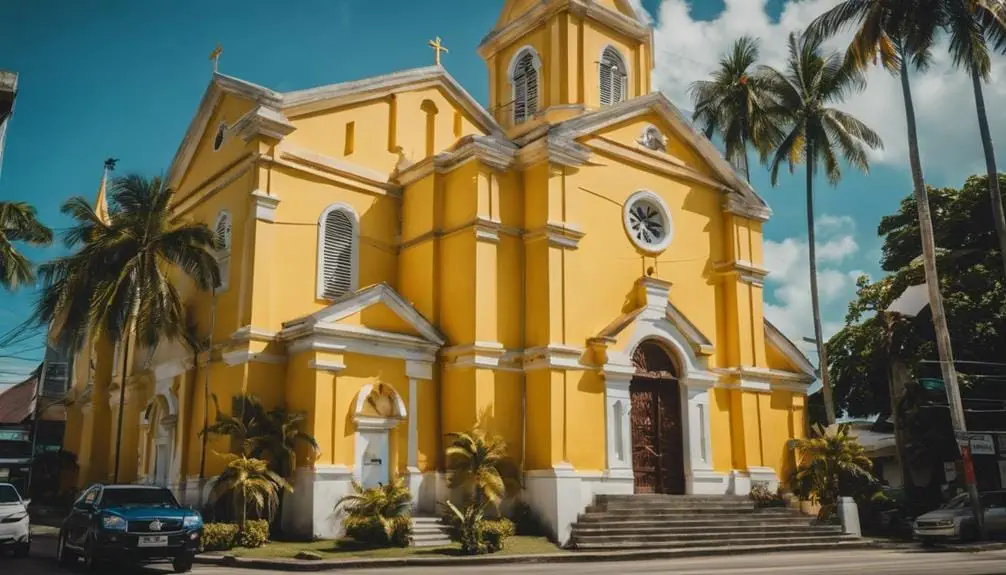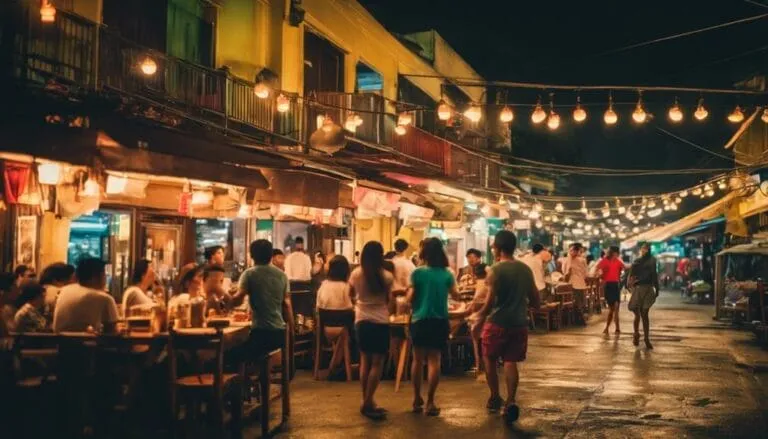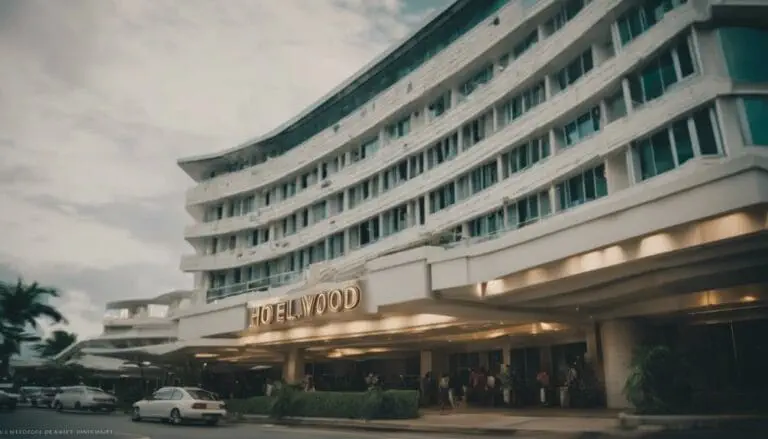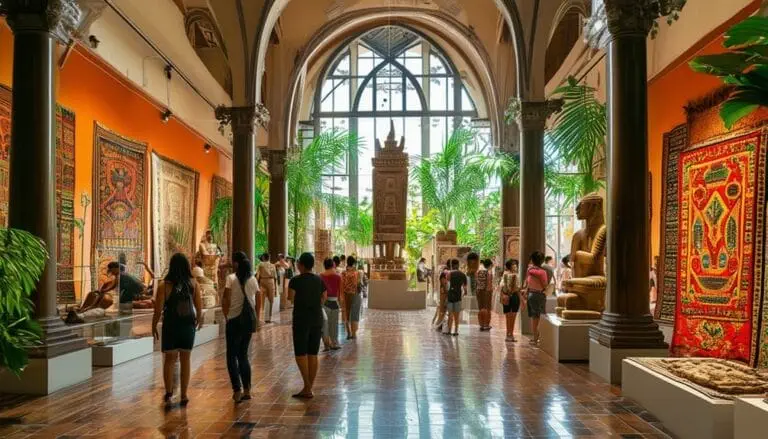Sto Nino Church Cebu: Iconic Shrine of Faith
As you stand before the majestic Sto Nino Church Cebu, you are about to embark on a journey through time and faith. The history embedded within its walls whispers tales of devotion and resilience, echoing the footsteps of generations past.
Curious to uncover the secrets held by this revered sanctuary, you’ll find yourself drawn deeper into the spiritual tapestry that adorns this sacred place. What mysteries lie within its hallowed confines, waiting to be unraveled by those who seek?
Key Takeaways
- Founded in 1565, a significant historical landmark
- Architecturally unique with a blend of styles
- Hosts the vibrant Sinulog Festival annually
- Houses the revered Santo Niño De Cebu statue
Historical Significance of Sto Nino Church
Founded in 1565, the Basilica del Santo Niño in Cebu stands as one of the oldest Catholic churches in the region, boasting a rich historical significance that has been recognized both locally and nationally. Designated as a National Historical Landmark in 1941, the Basilica del Sto Nino holds immense historical importance in the Philippines.
Its ecclesiastical significance is undeniable, being declared the Mother and Head of all Churches in the Philippines in ecclesiastical documents. The recognition as a National Cultural Treasure in 2021 further solidifies its status as a pillar of cultural heritage.
The Sto Nino Church’s role in the religious and cultural history of the Philippines can’t be overstated. Its presence has shaped the faith and traditions of the Filipino people for centuries, making it a symbol of resilience and devotion.
As a Catholic church with such esteemed accolades, its historical importance reverberates not only in Cebu but throughout the entire Philippines, standing as a testament to the enduring legacy of faith and culture.
Architectural Features of Basilica Minore

The architectural features of Basilica Minore del Santo Niño in Cebu showcase a unique blend of Muslim, Romanesque, and neo-classicism styles, contributing to its distinct charm and historical significance.
- The exterior of the basilica retains its original stone texture, preserving its historical authenticity.
- Inside, the dome-like ceiling reflects the influence of Muslim architecture, adding a unique design element to the basilica.
- Adjacent to the convent, a bell tower stands tall, enhancing the architectural charm of the basilica.
- Visitors can explore a museum within the basilica, offering insights into the history of Christianity in Cebu and enriching the cultural experience.
These architectural elements not only make Basilica Minore del Santo Niño a visually captivating site but also provide a glimpse into the diverse influences that have shaped its design over the years.
Cultural Festivals Celebrated at the Church

Cultural festivities celebrated at the Sto Nino Church in Cebu offer a vibrant tapestry of traditions and history, drawing in crowds from near and far to partake in the rich cultural heritage. One of the most prominent cultural festivals held at the church is the annual Sinulog Festival, a grand celebration that takes place every third Sunday of January in Cebu City.
This festival, deeply rooted in Filipino history, honors the Santo Niño and the introduction of Christianity to the Philippines. The word ‘Sinulog’ is derived from ‘sulog,’ symbolizing the flowing movement of water depicted in traditional dance steps. During the nine-day festival, the Plaza Sugbo comes alive with vibrant street parades where participants don colorful costumes and engage in traditional dances.
The Sinulog Festival isn’t only a feast for the eyes with its colorful displays but also a time for religious processions and musical performances that showcase the rich cultural heritage of the region.
Santo Nino De Cebu Statue

The revered Santo Niño de Cebu statue, a cherished Roman Catholic religious icon depicting the Child Jesus, holds a significant place in the cultural and religious fabric of the Philippines.
Here are some key points about this iconic statue:
- The statue is housed in the Basilica Minore del Santo Niño de Cebu, the oldest Roman Catholic church in the country.
- It was a gift from Ferdinand Magellan to Rajah Humabon of Cebu in 1521 and is considered the oldest Christian relic in the Philippines.
- The Santo Niño statue is made of dark wood and stands approximately 12 inches tall, enclosed in a glass case within the basilica.
- Masses are held regularly at the Basilica Minore del Santo Niño, and the statue is a focal point of devotion for many Filipino Catholics who believe in its miraculous powers and intercessions.
Are Both Sto Nino Church and Cebu Taoist Temple Important Religious Sites in Cebu?
Yes, both Sto Nino Church and Cebu Taoist Temple are important religious sites in Cebu. While the former holds significance in Christianity as the oldest Roman Catholic Church, the latter is a prominent Taoist temple attracting visitors who are keen on learning about Cebu Taoist Temple history.
Is Sto Nino Church in Cebu City Near Any Medical Clinics?
Yes, Sto Nino Church in Cebu City is near several medical clinics in cebu. Being located in a bustling city, visitors and residents can easily find medical clinics in Cebu, such as Chong Hua Hospital, Cebu Doctors’ University Hospital, and Perpetual Succour Hospital nearby the historical church.
Visitor Information and Tips

For those planning to visit the Basilica del Santo Niño in Cebu, the daily opening hours from 8:30 AM to 6:00 PM provide ample opportunity to explore this historic site. The Basilica, also known as the Minore del Santo Niño, holds significant religious and cultural importance, with roots tracing back to the arrival of the image of Santo Niño in 1565 with Miguel Lopez de Legazpi.
Located near D. Jakosalem Street in Cebu City, accessing the Basilica is convenient via public transportation such as Mybus from Mactan Cebu to SM Cebu City or jeepneys with route codes 12I or 10M. Visitors can immerse themselves in the rich history of the Basilica, which was elevated to the rank of minor basilica by Pope Paul VI in 1965.
If you plan your visit well, attending the annual Sinulog Festival every third Sunday of January can provide a unique experience, as the Basilica becomes a focal point for celebrations honoring the Santo Niño, attracting pilgrims and tourists alike. Whether you’re drawn to the architectural beauty, religious significance, or cultural heritage, the Basilica del Santo Niño offers a memorable experience for all who visit.
Conclusion
In conclusion, Sto Nino Church Cebu stands as a testament to the rich history and cultural heritage of Cebu. With its historical significance, architectural beauty, and vibrant cultural festivals, the basilica continues to attract visitors from all over the world.
The enshrined image of the Holy Child and the annual Sinulog Festival are just a few examples of the religious traditions that make this church a must-visit destination for those seeking a deeper connection with faith and history.
After your spiritual visit, find serenity and comfort at Southpole Central Hotel in the heart of Cebu City. Relax in our modern accommodations and rejuvenate for your next adventure.
Frequently Asked Questions
How Old Is Sto. Niño Church Cebu?
The age of Sto. Niño Church in Cebu is significant, standing as a testament to the enduring history of Catholicism in the region. The architectural blend, renovations, and cultural events make it a revered pilgrimage site.
What Is the Dress Code for Sto. Niño Church Cebu?
When visiting a religious site, it’s essential to follow proper attire guidelines to show respect for the cultural and religious significance. Dress appropriately with modest clothing, like pants or skirts below the knee and tops with sleeves, honoring traditional customs.
What Are the 5 Famous Churches in Cebu?
When exploring Cebu’s rich tapestry of churches, you’ll encounter architectural marvels, historical significance, cultural heritage, religious traditions, and iconic landmarks. These sacred sites intertwine with local festivals, spiritual practices, and sacred relics, captivating tourists.
What Is the Basilica Del Santo Nino Known For?
The Basilica del Santo Niño is known for its religious significance, cultural heritage, and as a pilgrimage site featuring festivals, iconic statues, and historical events. It is a tourism attraction embodying local traditions.







